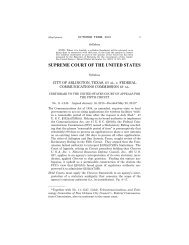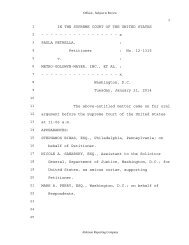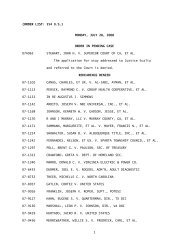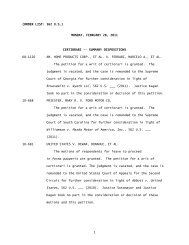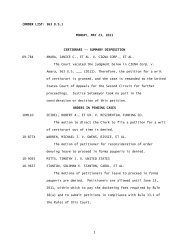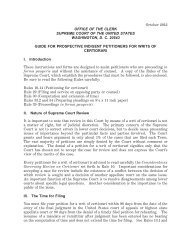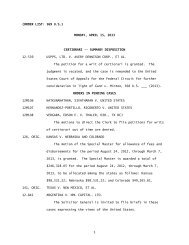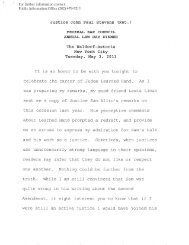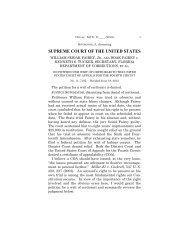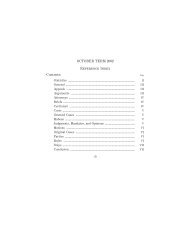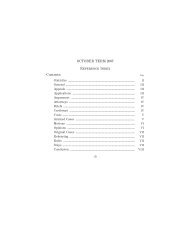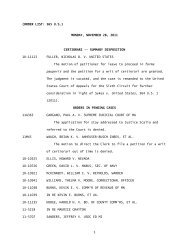12-398 Association for Molecular Pathology v. Myriad Genetics, Inc ...
12-398 Association for Molecular Pathology v. Myriad Genetics, Inc ...
12-398 Association for Molecular Pathology v. Myriad Genetics, Inc ...
Create successful ePaper yourself
Turn your PDF publications into a flip-book with our unique Google optimized e-Paper software.
<strong>12</strong> ASSOCIATION FOR MOLECULAR PATHOLOGY v.<br />
MYRIAD GENETICS, INC.<br />
Opinion of the Court<br />
BRCA2 genes. The location and order of the nucleotides<br />
existed in nature be<strong>for</strong>e <strong>Myriad</strong> found them. Nor did <strong>Myriad</strong><br />
create or alter the genetic structure of DNA. Instead,<br />
<strong>Myriad</strong>’s principal contribution was uncovering the<br />
precise location and genetic sequence of the BRCA1<br />
and BRCA2 genes within chromosomes 17 and 13. The<br />
question is whether this renders the genes patentable.<br />
<strong>Myriad</strong> recognizes that our decision in Chakrabarty is<br />
central to this inquiry. Brief <strong>for</strong> Respondents 14, 23–27.<br />
In Chakrabarty, scientists added four plasmids to a bacterium,<br />
which enabled it to break down various components<br />
of crude oil. 447 U. S., at 305, and n. 1. The Court held<br />
that the modified bacterium was patentable. It explained<br />
that the patent claim was “not to a hitherto unknown<br />
natural phenomenon, but to a nonnaturally occurring<br />
manufacture or composition of matter—a product of human<br />
ingenuity ‘having a distinctive name, character [and]<br />
use.’” Id., at 309–310 (quoting Hartranft v. Wiegmann,<br />
<strong>12</strong>1 U. S. 609, 615 (1887); alteration in original). The<br />
Chakrabarty bacterium was new “with markedly different<br />
characteristics from any found in nature,” 447 U. S., at<br />
310, due to the additional plasmids and resultant “capac-<br />
ity <strong>for</strong> degrading oil.” Id., at 305, n. 1. In this case, by<br />
contrast, <strong>Myriad</strong> did not create anything. To be sure, it<br />
found an important and useful gene, but separating that<br />
gene from its surrounding genetic material is not an act of<br />
invention.<br />
Groundbreaking, innovative, or even brilliant discovery<br />
does not by itself satisfy the §101 inquiry. In Funk Brothers<br />
Seed Co. v. Kalo Inoculant Co., 333 U. S. <strong>12</strong>7 (1948),<br />
this Court considered a composition patent that claimed a<br />
mixture of naturally occurring strains of bacteria that<br />
helped leguminous plants take nitrogen from the air and<br />
fix it in the soil. Id., at <strong>12</strong>8–<strong>12</strong>9. The ability of the bacteria<br />
to fix nitrogen was well known, and farmers commonly<br />
“inoculated” their crops with them to improve soil nitrogen



